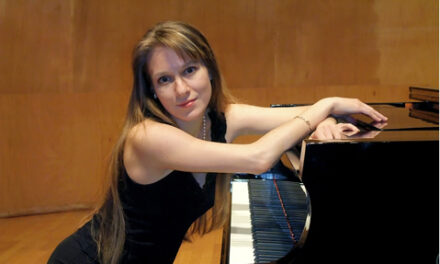There’s always that “it went by so fast” feeling when you find yourself on the last page of the Eastern Music Festival’s comprehensive program booklet. The 48th season of this magnificent jewel of a summer music festival ended with a program that proudly showed off its world-class orchestra. Could it just be a coincidence that the 2008 season also ended with the same soloist, cellist Xavier Phillips, and a major work by Richard Strauss? This time, Phillips and Strauss were combined in a performance of Richard Strauss’ mammoth tone poem Don Quixote, while it was the first half that had the orchestra all by their lonesome in Claude Debussy’s revolutionary La Mer. Gerard Schwarz, Music Director of the EMF, was on the podium for this brilliantly played final concert of 2009.
This was an evening that showed the remarkable diversity and unending wellspring of sounds that can come from the same configuration of instruments. Orchestration was the word-of-the-day, and first up was Hugh Aitken. Composer Aitken and Schwarz go way back to their years at Juilliard when Aitken was teaching and Schwarz was a trumpet major. Song Dance, a sparkling and energetic opener, served as the perfect musical appetizer. Upon hearing this I was reminded of several of Respighi’s compositions and his effervescent orchestration. The Eastern Festival Orchestra played like a great jazz band, with pinpoint rhythmic articulation and chamber-like ensemble but swinging and giving the feeling of improvisatory freedom.
Debussy had already written many solo piano and some chamber music works that led him to be labeled as the musical counterpart of the great French impressionist painters, but it was his remarkable 1904 orchestral composition La Mer (The Sea) where these traits coalesced into a genuine musical landscape. Simply put, this is a description of the ocean in sound and, after this, music and orchestras were forever changed. The three distinct movements depict every facet of the peace and violence of what covers 75% of the earth’s surface. The gauzy, dreamlike persona of much of this work belies the technical demands placed on the orchestra. Schwarz led us through sunrises, storms, violent crashing waves, and frolic between wind and sea – while we sat landlocked in Greensboro. Over 100 years after its premiere, Debussy’s crowning achievement still serves as the model for programmatic music and is an unending source of inspiration for — and sometimes theft by — today’s film composers.
Whereas Debussy often uses technically difficult passages as vehicles to convey atmosphere, effect, and affect, Richard Strauss proudly wears this technique on his composer’s sleeve. His music is monstrously hard to play and it sounds like it, and it is most definitely not something to try at home without professional supervision. (Ask any string player working on the sadistic parts to Don Juan for an audition.) Richard Strauss’ other “Don” work, Don Quixote, premiered in 1897, is based on the novel Don Quixote de la Mancha by Miguel Cervantes. This is a mammoth work with an introduction, theme, ten variations, and a finale. The cello soloist was the young Parisian Xavier Phillips, whose burnished tone and big sound fleshed out the brash character of Don Quixote. I have never understood why the cellist is the headliner and out front as soloist while the solo viola, portraying the comic sidekick Sancho Panza, is just as big a part but remains in the section. Daniel Reinker, co-principal viola, was mesmerizing in this semi-hidden role.
Although preceding Debussy’s magnum opus by six years and quite different in character, Don Quixote similarly stretched the bounds for what an orchestra can do and made demands on musicians that to this day are frightening. Gerard Schwarz and the Eastern Music Festival Orchestra transcended those very real but surface obstacles and gave us an evening of nature, fantastic stories, and adventure in sound. This is what makes live concerts indispensable.











